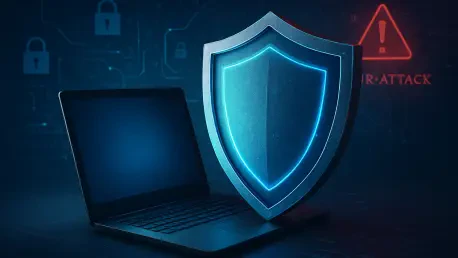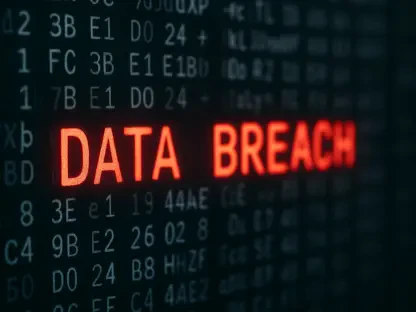In the ever-evolving landscape of cybersecurity threats, a disturbing trend has emerged where tools designed to protect are being turned against their creators and users with devastating consequences, as ransomware attacks take a sophisticated turn with threat actors exploiting Velociraptor, an open-source digital forensics and incident response (DFIR) tool, to orchestrate complex and stealthy campaigns. Originally intended for security professionals to investigate and respond to incidents, this software is now being repurposed by malicious entities to maintain persistent access, escalate privileges, and deploy ransomware across IT environments. The implications of such tactics are profound, as they blur the line between defensive and offensive tools, challenging organizations to rethink their security postures. This alarming development highlights not only the ingenuity of cybercriminals but also the urgent need for robust defenses against the misuse of legitimate software in malicious operations.
Unveiling the Misuse of a Security Tool
The exploitation of Velociraptor in ransomware attacks represents a significant shift in how cybercriminals approach their craft, turning a trusted security tool into a weapon of disruption. Reports indicate that attackers, potentially linked to a China-based group known as Storm-2603, have leveraged an outdated version of Velociraptor (0.73.4.0) that contains a critical privilege escalation vulnerability, identified as CVE-2025-6264. This flaw allows the execution of arbitrary commands, enabling complete control over compromised endpoints. By installing the tool via malicious MSI files hosted on deceptive domains, threat actors establish a foothold in targeted systems, ensuring they can return even after initial detection. Such tactics demonstrate a deep understanding of both offensive strategies and defensive mechanisms, as Velociraptor’s legitimate purpose masks the malicious intent behind its deployment, making it harder for security teams to distinguish between routine operations and an active attack.
Beyond the initial breach, the misuse of Velociraptor facilitates a range of destructive activities that amplify the impact of ransomware campaigns. Once embedded in a system, attackers use the tool to maintain persistent access, often syncing admin accounts to Entra ID through domain controllers and accessing VMware vSphere consoles for sustained control over virtual environments. This persistence is paired with defense evasion techniques, such as altering Active Directory Group Policy Objects (GPOs) to disable real-time protection and monitoring features. The result is an environment where traditional security measures are rendered ineffective, allowing cybercriminals to operate undetected for extended periods. As these methods become more refined, the challenge for organizations lies in identifying and mitigating the presence of legitimate tools being used for illegitimate purposes, a task that requires advanced monitoring and a proactive approach to software updates.
Multi-Ransomware Strategies and Attack Complexity
A notable aspect of these ransomware campaigns is the deployment of multiple ransomware variants within a single operation, showcasing an escalation in attack complexity. In a specific incident investigated recently, attackers affiliated with Warlock ransomware unleashed a combination of Warlock, LockBit, and Babuk strains to encrypt VMware ESXi virtual machines and Windows servers. This multi-pronged approach disrupts IT infrastructure on multiple fronts, with Warlock appending files with a “.xlockxlock” extension, while a Linux binary of Babuk partially encrypts ESXi server files with a “.babyk” signature. Such diversity in ransomware deployment not only maximizes damage but also complicates recovery efforts, as victims must contend with different encryption mechanisms and ransom demands. This strategy underscores a calculated effort by threat actors to overwhelm defenses and extract maximum profit from their targets.
Further deepening the sophistication of these attacks is the meticulous process of data exfiltration that accompanies encryption. PowerShell scripts, often fileless to evade detection, are employed to upload sensitive data to specific IP addresses, with evasion tactics like sleep commands and adjusted progress preferences to avoid triggering alerts. The scripts are selective, targeting Office documents and files under 50MB for efficient transfer, reflecting an operational focus on speed and impact. Additionally, attackers impair defenses by disabling Microsoft Defender protections and creating scheduled tasks to ensure persistence. This combination of encryption and exfiltration, supported by tools like Velociraptor for stealth, paints a picture of highly organized campaigns where every step is designed to exploit vulnerabilities and hinder response efforts, leaving organizations scrambling to regain control of their systems.
Evolving Threats and Defensive Challenges
The broader trend of weaponizing legitimate tools like Velociraptor signals a growing sophistication in ransomware tactics that poses significant challenges to cybersecurity defenders. Threat actors are no longer relying solely on custom malware; instead, they repurpose software meant for security and incident response, exploiting the trust and access these tools inherently possess. This approach not only enhances the stealth of their operations but also complicates attribution and detection, as the presence of such tools in an environment may not immediately raise red flags. The campaign attributed to Storm-2603, with its consistent tactics like using cmd.exe, batch scripts, and manipulating Internet Information Services (IIS) components, exemplifies how attackers blend malicious intent with legitimate processes, creating a hybrid threat that is difficult to isolate and mitigate.
Addressing these evolving threats requires a fundamental shift in how organizations approach cybersecurity, moving beyond traditional defenses to anticipate the misuse of trusted tools. The deployment of multiple ransomware variants in a single attack further indicates a future where recovery becomes increasingly complex, as defenders must unravel layers of encryption and negotiate with multiple threat actors. Timely software updates are critical to patch vulnerabilities like the one exploited in Velociraptor, while comprehensive monitoring for anomalous behavior can help detect misuse early. Layered security measures, including endpoint protection and network segmentation, are essential to limit the spread of ransomware once a breach occurs. As cybercriminals continue to innovate, the onus falls on organizations to stay ahead by adopting proactive strategies that account for the dual-use nature of modern security tools.
Strengthening Defenses Against Sophisticated Attacks
Reflecting on the incidents involving Velociraptor, it becomes evident that ransomware operators have exploited outdated software versions to devastating effect, using a trusted DFIR tool to orchestrate stealthy and persistent attacks. The multi-ransomware strategy employed by groups like Storm-2603 has amplified the disruption, targeting critical IT infrastructure with a combination of encryption strains that overwhelm recovery mechanisms. Data exfiltration, executed with precision through evasive PowerShell scripts, has further compounded the damage, exposing sensitive information alongside encrypted systems. These attacks have revealed a critical gap in cybersecurity preparedness, where legitimate tools turned malicious blur the lines of detection and response, leaving organizations vulnerable to increasingly complex threats.
Moving forward, actionable steps must be prioritized to counter such sophisticated ransomware campaigns. Organizations should implement rigorous patch management to ensure tools like Velociraptor are updated against known vulnerabilities. Enhanced monitoring for unusual activity, especially involving legitimate software, can provide early warnings of misuse. Adopting a zero-trust architecture, where access is continuously verified, helps limit the impact of compromised tools. Additionally, regular training for IT staff on emerging threats and tactics can bolster readiness against hybrid attacks. By focusing on these proactive measures, businesses can better safeguard their environments against the evolving landscape of ransomware, ensuring that tools meant for protection do not become instruments of harm.









